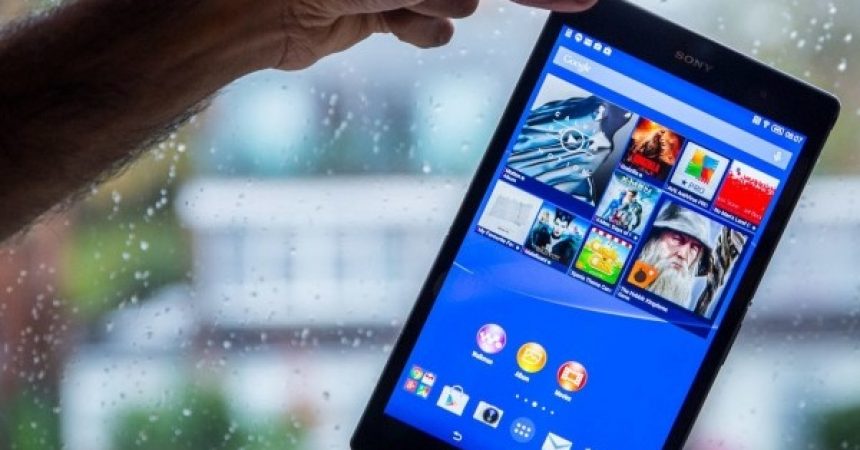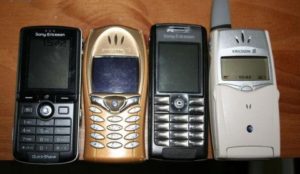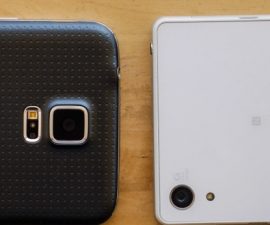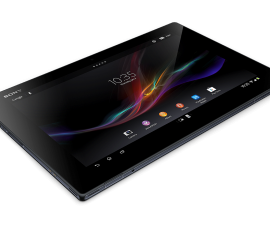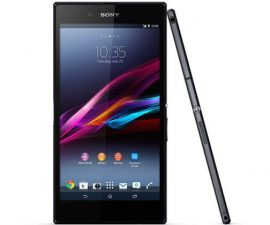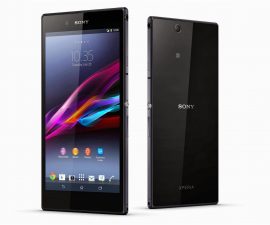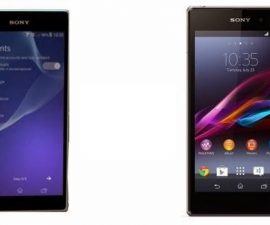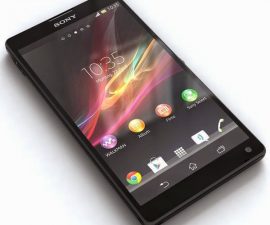What Is Next For Sony Mobile?
Sony Mobile entered into the phone market only after the turn of the century but the Japanese company rose quickly to the top with innovative smartphones.
Early innovations propelled the company forward and it offered many alternatives to phones from previous leaders Nokia, RIM and Motorola. Unfortunately, like many OEMs at the time, Sony was unprepared for the rise of the iPhone when Apple launched in 2007.
Many other former giants in the mobile industry have sold out and moved on but Sony continues to fight for its share of the smartphone market – mostly through their Xperia handsets but the company is still not innovating as much as it should. With this being the case, how can they move forward?
The Sony Ericsson Years
Before we look at how Sony can go forward, let’s recall how Sony entered the mobile market in the first place
- Sony first ventured into mobile through a joint venture with Sweden’s Ericsson.
- The JV of Sony Ericson created what was then one of the best smartphone lines available with the launch in 2001 of the Sony Ericsson T68i.

Why was the Sony Ericsson successful?
- The T681’s design was considered brilliant. It was easy to hold and use with curved edges, a joystick instead of navigation buttons, a proprietary OS and a 256 color display.
- Though the cost at the time was considered expensive, the T681 cost $650, may found that the sleek and interesting design as well as the ease of use worth the price.
- The next year, 2002, phones began to get bigger and the idea of a premium phone began.
- In answer to this, Sony Erickson launched the T610 which had a black and silver color scheme, kept the joystick and improved on the display.
- The T610 had a 65,000 color display with 128 x 160 resolution.
- This display was better than any other smartphone out there.
- The premium design and the display technology were major selling points of the Sony Ericsson T610.
- After the T series, came the K series.
- One of the major handsets in the K series was the K750i, launched in 2005. This was a handset many considered a “golden egg” for Sony.
- The K750i had a 2 MP camera, one of the best available then, and also provided a music player and expandable storage.
- With MMS beginning to rise in popularity, the camera of the K750i was a timely release.
- The K800i (K790i in some markets) continued the trend of having good cameras in Sony Ericsson phones. This handset used Sony’s Cypershot technology which they already used in their cameras.
- The K800i offered a 3.2 MP camera and a 2-inch QVGA display.
- The K800i was the handset that made people realize that mobile phones could indeed take pictures at par to point-and-shoot cameras.
The rise of the iPhone
Like many OEM’s at the time – Motorola, BlackBerry, Nokia – Sony Ericsson was caught unaware by the appeal of the iPhone.
What did the iPhone bring?
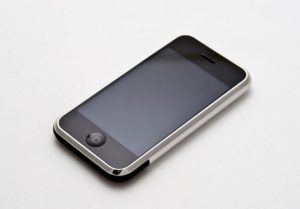
- The iPhone brought something different to the smartphone technology table with its capacitive touch screens.
- Before the iPhone, the few touchscreen devices in the market used resistive touchscreens which responded to pressure.
- Apple’s capacitive touch displays responded to touch.
The idea of having an all-touchscreen device transformed what customers expected from a mobile phone and Sony Ericsson was unable to produce a handset that could challenge the iPhone and its touchscreen.
- Apple had developed their iPhone OS to be specifically used with a touchscreen.
- Sony Ericsson tried to just repurpose their existing Symbian UI to make it usable for touch displays.
Decline of Sony Ericsson
- In 2008, LG overtook Sony Ericson.
- Profits began to steadily wane. From of €1.125 billion in 2007, profit dropped to a nearly €800 million loss in 2009.
The Xperia
In response to the rise of the iPhone, Sony Ericsson tried to look for a good platform for their mobile phones, first trying Symbian then moving on to Windows Mobile, then Android. As Sony Ericsson began to transition from mobile phones to smart phones, they still produced some feature phones.
Phones released before the Xperia included
- The W995, which featured the world’s first 8-MP camera. This was launched in 2009 are part of the W series.
- The P series, which used the Symbian platform and had PDA features.
Then, in October 2011, Sony Mobile announced that they were going to buy out Ericsson. The buy-out was completed on the following February and Sony Mobile Communications, a wholly-owned subsidiary of Sony was born. Along with the buy-out, the company decided to undergo restructuring.
Before the buy-out, two smart devices were produced by Sony Ericsson. These were the Xperia X1 and the Xperia X2
- Both offered the best of Sony Ericsson’s PDA technology and their camera phones.
- Both ran Microsoft’s Window mobile platform.
- The X1 had a slide-out Qwerty keyboard combined with both a touchscreen and a stylus.
After the Xperia X1 and Xperia Z2, the company developed their first Android smartphones.
- The very first Android smartphone from Sony was announced in 2010. This was the Xperia X10. The device features a style and design language that has become a trait of the Xperia line.
- The Xperia X10 mini pro – the first Android Qwerty
- The Xperia Arc, which had a great camera
- The Xperia Ray
- The Xperia Play which could be used with the PlayStation as it had a slide-out controller.
After the buyout was complete, Sony Mobile Communication decided to focus on phones with the Android platform.
- The Xperia S, which was announced in February of 2012.
- The Xperia S had a 4.3-inch HD display, 32 GB of internal storage, and a 12 MP rear camera. These design characteristics became a staple for many future Xperia designs.
- Other smartphone offerings from Sony followed: Xperia Ion, Xperia Acro, Xperia P, Xperia U. Xperia was soon known as Sony’s smartphone brand.
In 2013, the Xperia Z was announced. This marked the birth of Sony’s smartphone range. Unfortunately, through there have been other iterations since then, and a few upgrades in display type and camera there have been no real innovations and Sony has failed to capture the imagination and interest of smartphone users.
The Xperia line has offered some great handsets but Sony has yet to find a device that can capture the magic of their earlier offerings. This could be because the company seems to be trying to avoid risk and, instead of innovation, just offers updates.
Where should Sony Mobile go?
One wise move that Sony has taken is that it has begun to integrate some of their non-mobile technologies into their smartphones:
- X-Reality Engine
- Bionz image processing
- Exmore-R sensor.
While these have produced some good phones in terms of displays and cameras, Sony still finds it languishing behind its competitors.
-
Sony partners get better use out of their technology
Sony actually provides a lot of the camera sensors used in their competitors smartphones. When used in a Samsung or Apple device, these sensor produce great shots. What’s holding Sony back is the fact that they are still using inferior processing.
In the end the biggest problem is that Sony just doesn’t upgrade their smartphone offerings enough between release cycles.
-
Change the release cycle
Sony should stick to one flagship a year and make sure that each handset they release be markedly different from the others.
-
Focus on other devices
The company has other devices such as smart cameras and tablets and even wearables.
Sony is still a major player in the tablet market with their latest Xperia Z4 Tablet being one of the best Android tablets out there.
- The Xperia Z4 Tablet is waterproof and designed to be used under a variety of conditions, from dusty desearts to monsoon areas or the cold of winter.
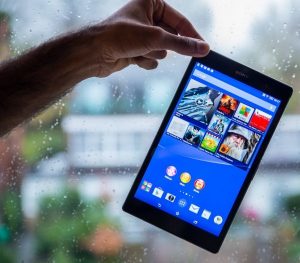
Sony also had great smart cameras.
- The QX10 and the QX100 clip-on cameras
- These have lensed that act like remote viewfinders. You can capture images using optical zoom from a smartphone
- The QX10 gets great point-and-shoot photos
- The QX100 offers manual controls.
- The QX1 and QX30 offer 30x optical zoom and a mount which allows you to use the E lenses from Sony’s DSLR range.
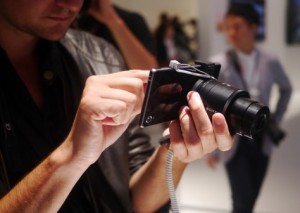
Sony has had wearables for a long time. In 2005, Sony Ericsson launched Live View wearables. Sony is one of the pioneers of the modern smart watch.
- The third generation of their SmartWatch ranges uses Google’s Android Wear OS.
- Just needs to refocus on the SmartWatch’s design to get the more premium look of its rivals such as the Apple Watch, Huawei Watch and the LG G Watch R.
At the end of the day, Sony needs to dare to be different if they want to survive. While their designs were once thought of as delightful, they are now boring. Sticking with the same designs and only offering slight spec upgrades with every version of their “new” smartphones is not going to help them recover their old glory.
What do you think about Sony’s devices, can they be improved?
JR.
[embedyt] https://www.youtube.com/watch?v=6KuPkNnqwHc[/embedyt]
